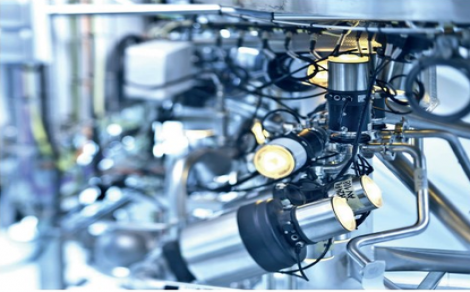- Home » Editorial » Hydraulics
Process control valves - making the right choice

Modern process control valves offer a wide range of features and benefits for industries that require precise control over fluids, steam and other gases. With so many control valves on the market, it is important to establish the features that will deliver the most cost-effective design for a particular application. Damien Moran, field segment manager, hygienic - pharmaceutical at Bürkert, looks at some of the basic differentiators as well as some recent design developments.
Control valves are used to manage the flow rate of a liquid or a gas and in-turn control the temperature, pressure or liquid level within a process. As such, control valves are defined by the way in which they operate to control flow and include globe valves, angle seat, diaphragm, quarter-turn, knife and needle valves, to name a few. In most cases the valve bodies are made from metal; either brass, forged steel or in hygienic applications 316 stainless steel.
Establishing the parameters
Actuators use an on-board system that measures the position of the valve with varying degrees of accuracy, depending on the application. A contactless, digital encoder can place the valve in any of a thousand positions, making it very accurate, while more rudimentary measurements can be applied to less sensitive designs.
One of the main areas of debate when specifying control valves is determining the size of the valve required.
Quite often process engineers will know the pipe diameter that is used in an application and it is tempting to take that as the defining characteristic for the control valve. Of greater importance are the flow conditions within the system as these will dictate the size of the orifice within the control valve. The pressure either side of the valve and the expected flow rate areessential pieces of information when deciding on the valve design.
Improving efficiency
Inside the valve body, the actuator design is predominantly either a piston or a diaphragm design. The piston design typically offers a smaller, more compact valve which is also lighter and easier to handle than the diaphragm designs. Actuators are usually made from stainless steel or polyphenolsulpide (PPS), which is a chemically resistant plastic. The actuator is topped off by the control head or positioner.
Older, pneumatically operated positioners had a flapper / nozzle arrangement and operated on 3-15 psi, so no matter what the state of the valve, open closed or somewhere in between, the system was always expelling some compressed air to the atmosphere.
Compressed air is an expensive commodity, requiring considerable energy to generate and when a manufacturing line is equipped with multiple process control valves all venting to the atmosphere, this can equate to a considerable waste of energy. It is important then to establish not only the most appropriate valve design, but also a cost-effective solution that takes account of annual running costs.
Modern, digital, electro-pneumatic valves that use micro solenoid valves to control the air in and out of the actuator have introduced significant improvements for operators. This design means that while the valve is fully open, fully closed or in a steady state, it is not consuming any air. This, and many other engineering improvements, have made substantial advances in both economy and precision.
-
PPMA 2025
23 September, 2025, 9:30 - 25 September, 2025, 16:00
NEC, Birmingham UK -
Advanced Engineering Show 2025
29 October, 2025, 9:00 - 30 October, 2025, 16:00
NEC, Birmingham UK










